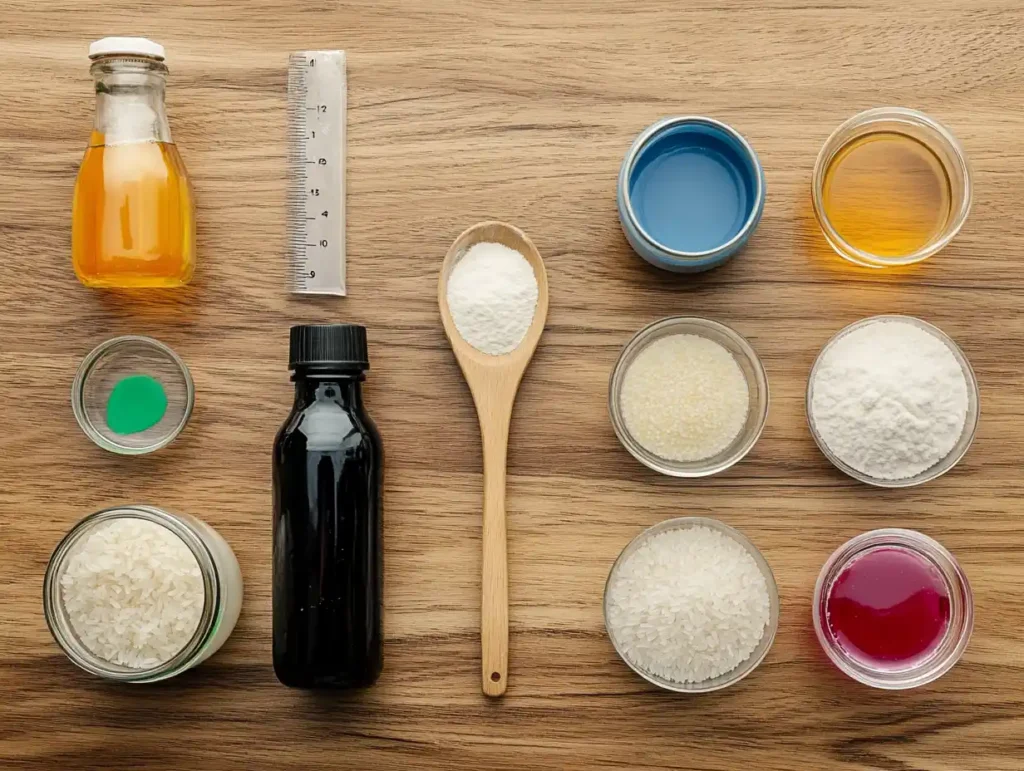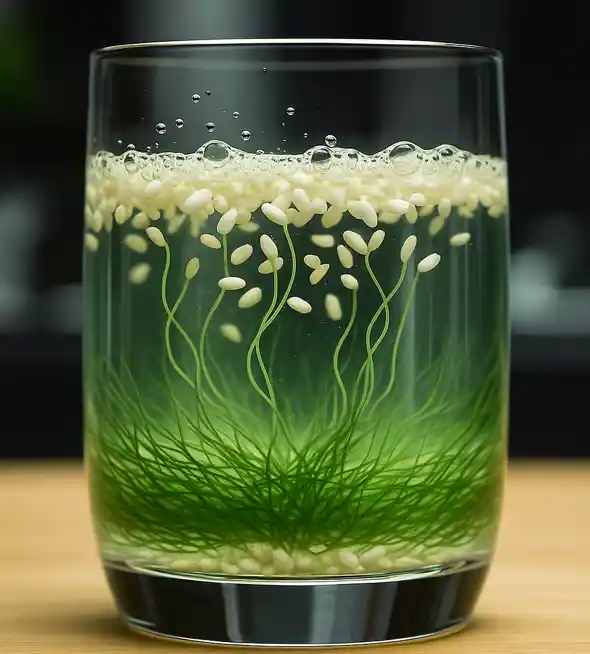Dancing Rice Experiment: It started with spilled vinegar, an old jar, and a curious five-year-old named Ellie.
We were halfway through making pancakes when she asked, “Why does it fizz when you clean the sink with baking soda?” Well, curiosity like that calls for an experiment—and a little dancing.
So, we pushed the pancake batter aside and turned our kitchen into a science lab. What happened next was pure kitchen magic: rice started bouncing like popcorn in a jar! That’s right—it danced. And no, we didn’t have music playing. Just the awesome power of simple chemistry.
Here’s how you can create your very own Dancing Rice Experiment at home—and sneak in a little science lesson along the way.
What You’ll Need:
- A clear jar or cup
- Water
- 1 tablespoon baking soda
- 1/4 cup uncooked white rice
- 1–2 tablespoons vinegar
- Food coloring (optional but fun)

How To Do It:
- Fill the jar about ¾ full with water.
- Add food coloring if you want to give it a little pizzazz. (Ellie chose purple. Of course.)
- Mix in the baking soda and stir it until it’s fully dissolved.
- Add the rice—watch it sink to the bottom.
- Pour in the vinegar and get ready for some action!
- Watch the rice rise and fall like it’s grooving to an invisible beat.
What’s Really Happening?
It’s not magic—it’s science!
When vinegar (an acid) meets baking soda (a base), they react and create carbon dioxide gas. That’s what makes the bubbles! These bubbles attach to the grains of rice, lifting them up. When the bubbles pop at the surface, the rice falls back down. And up and down it goes—like a little rice disco.
Why We Love This Experiment
Besides being easy and budget-friendly (you probably have everything in your pantry), it’s a wonderful way to introduce chemistry to kids in a hands-on, joyful way. Bonus: there’s basically no mess, and cleanup is a breeze.
A Little Story To Share
After our rice finished dancing, Ellie looked up and said, “Can we do this every Saturday?” I smiled and said, “Science club, every weekend, kitchen edition!”
Now, it’s a tradition in our home—Saturday morning science, led by Ellie, fueled by pancakes and curiosity.
Final Thought
The Dancing Rice Experiment is more than just a fun afternoon activity. It’s a beautiful reminder that science doesn’t need to be expensive or intimidating. Sometimes, it just starts with a curious child, a messy counter, and a few ingredients from the pantry.
Got more questions or want printable experiment cards? I’d be thrilled to make them for you—just let me know!
For more recipes follow me in Facebook and Pinterest
FAQs
Why Different Items Work Differently
Corn kernels or popcorn are heavier and larger, so they rise and fall in a more dramatic motion.
Rice grains are lighter, so the motion is more subtle and floaty.
Raisins have a wrinkled surface, which traps bubbles more easily—making them excellent for this experiment even with just soda.
What’s Happening Scientifically?
Chemical Reaction
When baking soda (a base) and vinegar (an acid) combine, they undergo a chemical reaction that produces carbon dioxide gas (CO₂)
Gas Bubble Formation
The CO₂ forms bubbles in the liquid. These bubbles naturally stick to surfaces—especially ones with texture like corn kernels, rice grains, or raisins.
Buoyancy in Action
As the gas bubbles accumulate on the surface of these objects, they reduce the object’s overall density, causing it to float upward.
Bubble Burst and Sink
When the bubbles pop at the surface, the object becomes heavier again and sinks. This cycle continues while the reaction produces gas—making the objects appear to “dance.”

Dancing Rice Experiment
- Total Time: 2 minutes
- Yield: 1 experiment 1x
Description
A fun and fizzy science experiment using common kitchen ingredients to make rice ‘dance’ in a jar. Perfect for curious kids and quick science lessons at home!
Ingredients
- 1 clear jar or glass
- ¾ cup water
- 1 tablespoon baking soda
- ¼ cup uncooked white rice
- 1–2 tablespoons vinegar
- food coloring (optional)
Instructions
- Fill your jar about ¾ full with water.
- Add food coloring if you like—blue or green adds a magical touch.
- Stir in the baking soda until fully dissolved.
- Drop in the uncooked white rice.
- Pour in the vinegar and watch the rice start to dance!
Notes
This experiment works because the reaction between baking soda and vinegar produces carbon dioxide gas, which forms bubbles that cling to the rice and lift it. Once the bubbles pop, the rice sinks and the cycle repeats. Try it with raisins or corn kernels for even more fun!
- Prep Time: 2 minutes

